Prey is the most recent entry in the inexplicably long-running Predator franchise about an alien who comes to Earth to hunt humans — inexplicable because, aside from the well-received first entry starring Arnold Schwarzenegger way back in 1987, the series has been neither a critical darling nor a box-office juggernaut. Nevertheless, six Predator films have been made before Prey, including two Alien vs. Predator crossover movies (about which the less said, the better).
The franchise has finally found another success with Prey, which is both a critical (92 percent on the Tomatometer) and audience triumph. Though not released theatrically, Hulu is reporting that Prey is its most watched TV or movie premiere ever — and it’s no mystery why. The movie features stunning landscape photography, compelling performances (including a revelatory turn by Amber Midthunder), and tense and exciting action sequences.
But viewers are also responding favorably to Prey because it is a watershed moment for representation, one that features members of the often vilified Comanche tribe as heroes. They are portrayed as neither the “savage Indian” of cinema’s past (The Searchers), nor the mystical Native American figure (Pocahontas), nor the white man’s sidekick in a story told from his point of view (The Lone Ranger), but rather the heroes of their own story from the first moment to the last.
To understand how rare this is, and what a momentous achievement Prey represents — one that is being praised by indigenous critics — we must first consider Native American representation throughout movie history.
The ‘savage Indian’ stereotype
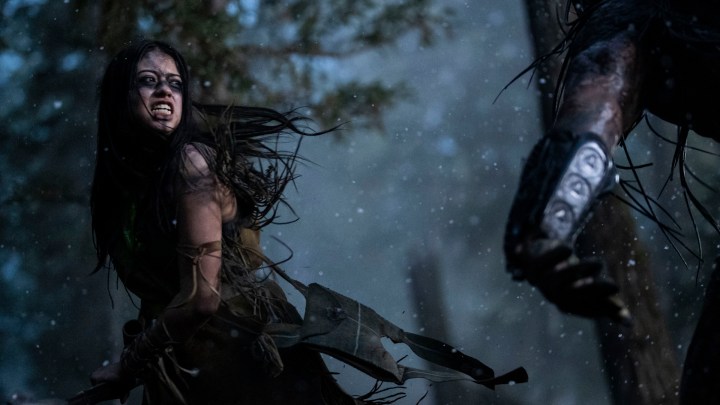
Native Americans were among the most popular subjects of early U.S. cinema (1895-1927), and though they were sometimes depicted sympathetically (as in Buster Keaton’s The Paleface from 1922), they rarely escaped stereotyping. White filmmakers often vilified them in Westerns (one of the most popular genres of early film and later television) as savage barbarians who stood in the way of Manifest Destiny and threatened both the white man’s “civilized” progress and the “purity” of white women. Many early films, such as those by film pioneer D.W. Griffith, also condemned miscegenation, or the racial mixing of Native Americans and whites.
Griffith was hardly alone. John Ford, another of the most prominent figures of cinema whose career spanned much of the 20th century, vilified Native Americans in popular movies such as Stagecoach (1939), Drums Along the Mohawk (1939), and Rio Grande (1950). He felt bad about it in later years and tried to paint them in a more human light in works like Cheyenne Autumn (1964). But by then, Ford — along with the purveyors of thousands of other Westerns that depicted bloodthirsty American Indians who whooped and hollered and scalped — had done irreversible damage.

One of Ford’s most infamous movies is The Searchers (1956), in which Ethan Edwards (John Wayne) hunts down the Comanches and their leader “Scar” after they kill his family, burn their frontier homestead, and kidnap his young niece (Natalie Wood). Does Ethan want to rescue her? No, he wants to slaughter her along with the Comanche that took her now that her white purity has been “ruined” by American Indians.
Despite this, The Searchers has been long hailed as one the great American movies. One example of its influence is that it inspired George Lucas, who paid it homage with the burning homestead scene in Star Wars. The brutal depiction of the Comanche in The Searchers helped make them into the monstrous figures of popular imagination, though it was hardly the only movie to do so. Comanche, another example from 1956, also depicted them as barbarians. (Though both movies criticize the actions of white men, they don’t go nearly far enough in humanizing the Indigenous characters).
In an historic departure, Prey subverts racist depiction of the Comanche by showing them as not only as heroes and warriors who respect the land, but as people in all their flawed complexity and conflicting impulses, something American movies have rarely done.
The ‘noble savage’ stereotype
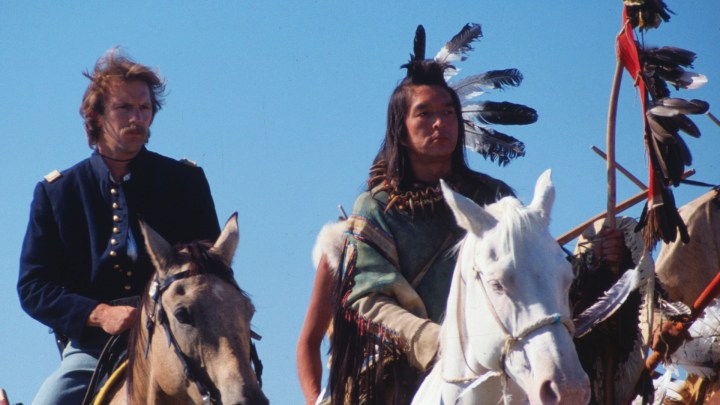
The characters in Prey are mostly played by American Indigenous actors, which is less common than you might think. American movies and culture have a long history of employing redface — actors painting their faces and otherwise dressing up like Native Americans. It’s one more way that the dominant culture has disenfranchised and stereotyped indigenous peoples, as they often weren’t even allowed to play themselves.
For example, the white actor Henry Brandon played the Comanche antagonist in both The Searchers and Comanche. Shockingly, the use of redface (and blackface, yellowface, etc.) is not confined to the past. Every few years, a new controversy emerges, whether it’s Emma Stone and Scarlett Johansson playing characters of Asian heritage in Aloha (2015) and Ghost in the Shell (2017), respectively, or Johnny Depp playing the Native American Tonto in The Lone Ranger (2013). Prey, conversely, showcases an entirely Native American cast for the first time ever, according to the film’s director, Dan Trachtenberg (with the exception of Dane DiLiegro, who plays the Predator).
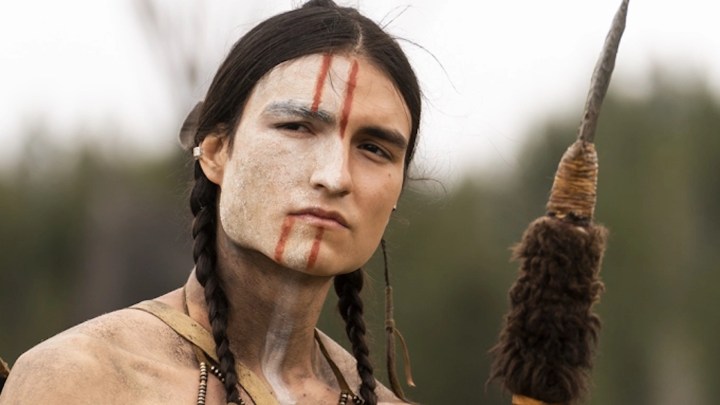
The use of redface and cultural appropriation hasn’t just been in the service of rendering American Indians as savagea. It’s also been used to portray the figure of the noble savage, another common stereotype. These characters are depicted as primitive but gentle, embodying a paradise on Earth, free of the constricting modernity that is the cause of the white man’s unhappiness.
The figure of the noble savage began to regularly appear in the revisionist Westerns and other films of the 1960s and ’70, such as Little Big Man (1970), A Man Called Horse (1970), and One Flew over the Cuckoo’s Nest (1975). These films reflected a new progressive sensibility that attempted to come to terms with the atrocities of America’s past in the context of the Civil Rights Movement and the Vietnam War.
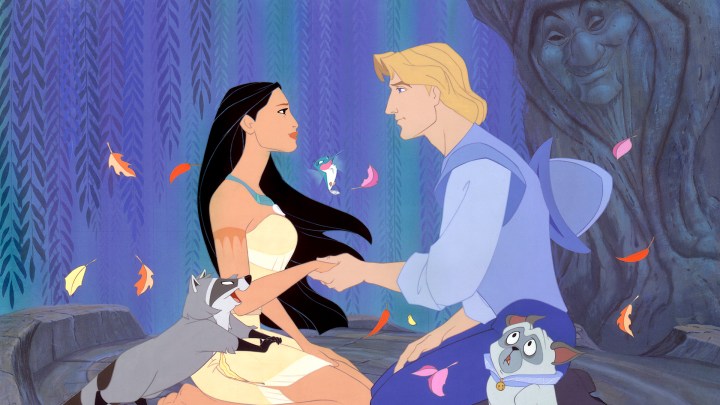
Noble savages lack a hero of their own kind and often worship and assist the white hero, while Native American women love the white hero and are often willing to die for that love. Examples include the Sioux in Dances with Wolves (1990), who embrace a white man (Kevin Costner) as their leader. Other examples include The Last of the Mohicans (1992), Pocahontas (1995), and the more recent Wind River (2017).
Although the figure of the Noble Savage may seem less harmful than that of the savage, it is equally dehumanizing in that it presents indigenous people as mystical beings whose purpose is to help shepherd the white man’s spiritual journey and forgive his guilty conscience for the transgressions he has committed against them.
How Prey flips the script
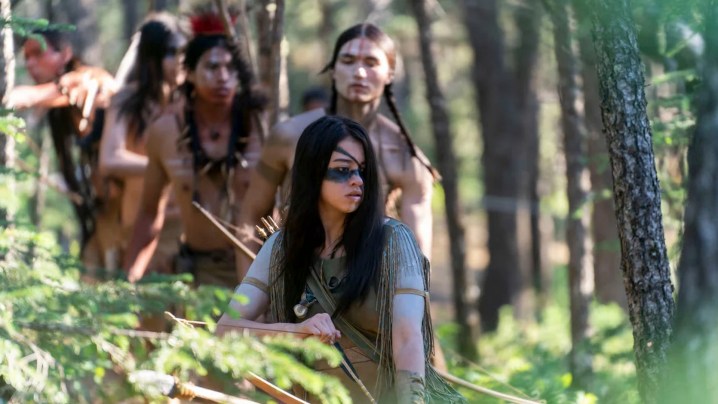
Prey features neither the savage or noble Native American tropes. Do some of the Comanche characters act forcefully? Sure, it was a tough time! Also, they are fighting a warrior from another planet! Do some of them act nobly? Yes, there are many examples of courage and sacrifice. But these characteristics don’t define them in stereotypical ways through a white point of view. The characters represent a rich diversity of personality types. They act in contradictory and surprising and disappointing ways, just like anybody.
In another historic move, Hulu is offering the movie in both an English version and a version dubbed in the Comanche language (something that obviously wouldn’t have been possible with a theatrical distribution, though it would have been exciting to see this movie on the big screen). Like any dubbed movie, the fact that the dialogue doesn’t quite synchronize with the mouth movements is a bit distracting, but it’s still beautiful to hear the language spoken. It’s also quite a show of commitment and cultural respect on the part of Hulu to even offer this.
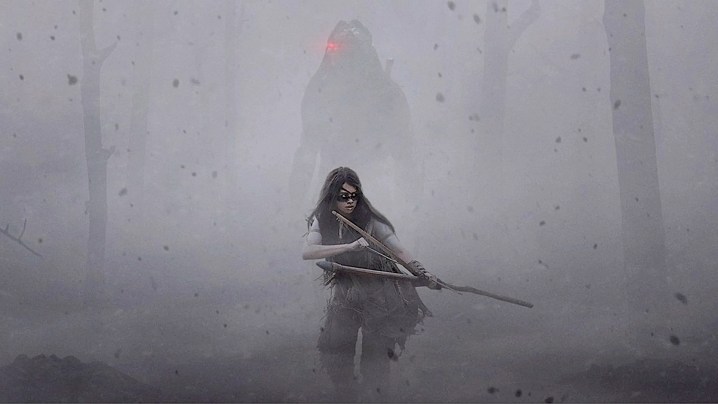
The English version has issues too. Both the dialogue and the inflection with which the actors deliver it sometimes sound spoken by 20-something characters from a CW show. The movie overall feels too contemporary in the way it traffics in action movie and YA fiction clichés, including the one in which the young woman must prove herself to all the men who scoff at her desire to become a hunter/warrior.
But even the ability to make a cliché-ridden genre movie is a victory for American Indigenous peoples. Often when given the opportunity to represent little-seen groups on screen, filmmakers feel enormous pressure to make the movie into a cultural document that becomes all things to all people. They get bogged down in representation and story suffers. They’re afraid to make mistakes.
Prey‘s makers don’t feel compelled to be sanctimonious or profound about Native Americans. It just shows us something of Comanche life circa 1719, then goes about its business as an action movie. Through the character’s actions, not some grand statement, we can see what amazing people they are. And if the movie has a few flaws, hopefully they can shrug them off and move on to the next one, just as white filmmakers have been allowed to do for more than a century. Only when getting the resources to have multiple chances at creating art can artists mature into something special.
Changing representation?
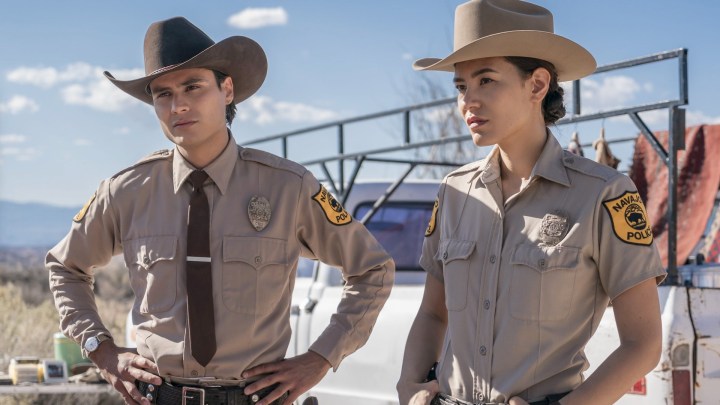
Given all this, does Prey point to changing positive representation for Native Americans? It’s probably too early to tell based on the success of one movie. Many outliers throughout history seem to point to change that either never comes or takes some time to really show up. For example, Marlee Matlin’s Oscar win for Best Actress in Children of a Lesser God didn’t lead to a widespread breakthrough in mainstream portrayals of the deaf community by deaf actors until last year’s CODA, which won three Oscars including Best Picture.
And the fact that Prey was made for streaming and not theaters suggests that studio execs don’t feel that a franchise movie with an all-Indigenous cast would rake in it the box office. Still, the signs are encouraging. The popularity of the film indicates that viewers are not just open to new kinds of stories — or at the very least, familiar stories told in a radically new way — but hungry for them.
Several other recent productions may also signal diversifying representation. Reservation Dogs, also on Hulu, is a comedy-drama about contemporary Indigenous teens living in Oklahoma from the minds of Sterlin Harjo and Taika Waititi, both Indigenous producers (Harjo is Seminole and Waititi is from New Zealand and of Māori descent). Dark Winds, on AMC, is based on Tony Hillerman’s novels about Navajo policemen, and is executive produced by indigenous filmmakers Graham Roland and Chris Eyre, the latter of whom who directed one of the few accounts of contemporary Native American life with Smoke Signals (1998).
Creative control, more than anything, is key. Trachtenberg is an excellent director (his 10 Cloverfield Lane is one of my favorites), and he does a great job directing Prey, but why didn’t an Indigenous director make this movie? True power lies behind the camera, in the director’s chair, and especially in the offices and boardrooms where executives make decisions about what gets financed and made. When more Native Americans — along with more Americans of every stripe — share this power, that’s when a change is gonna come.



